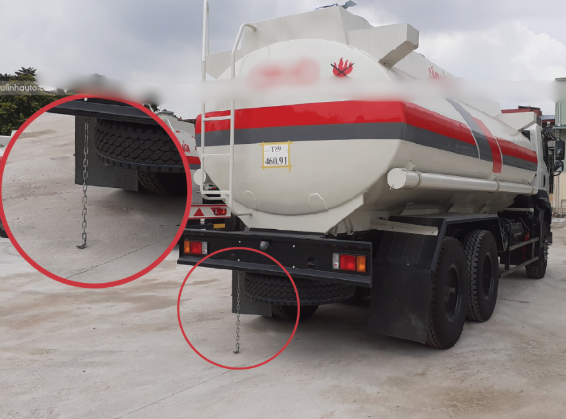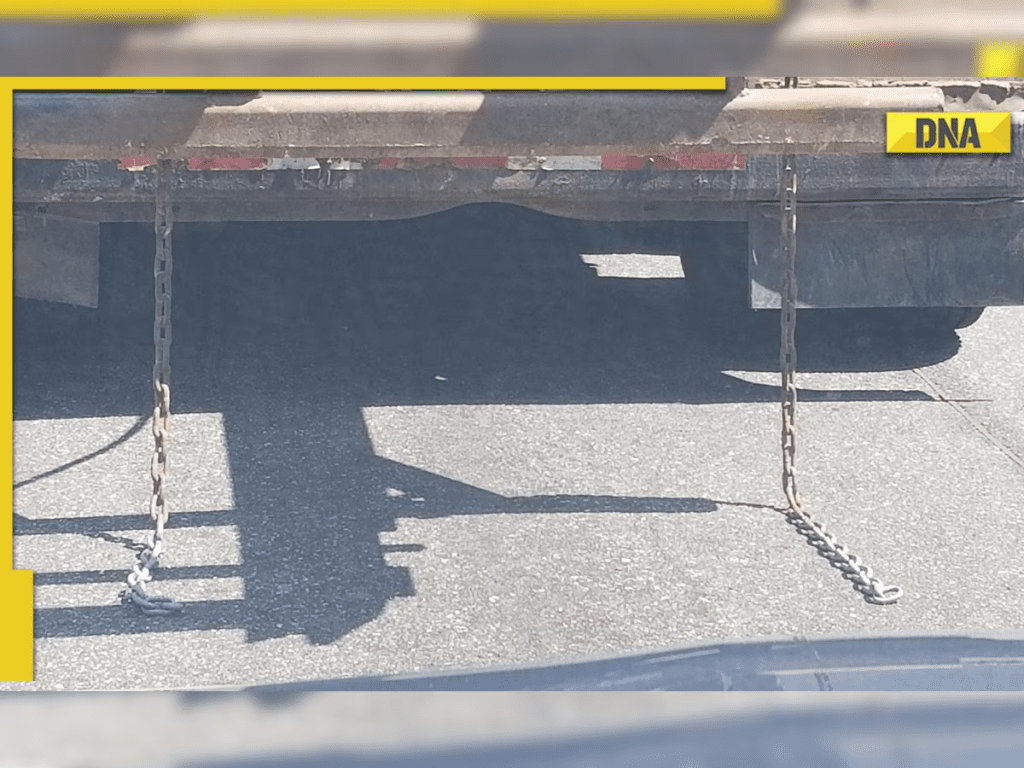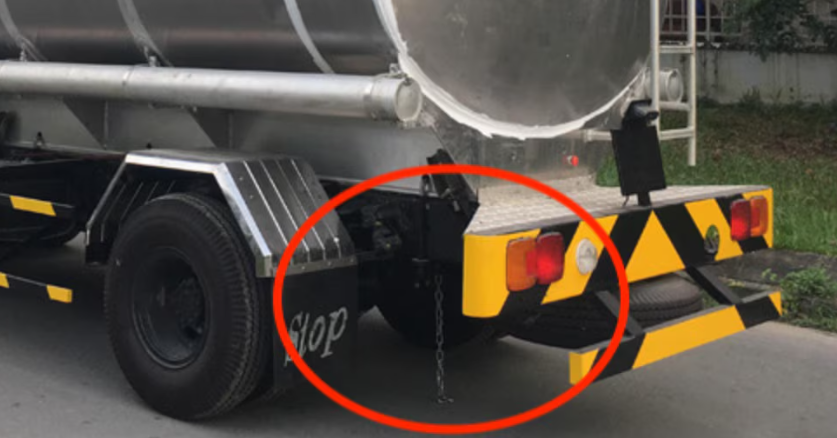If you’ve ever driven behind a tanker truck, you might have noticed a metal chain dangling from the back. This chain isn’t for decoration or a forgotten tool—it serves a critical purpose. In this article, we’ll explore why these chains are an essential safety feature for tanker trucks, particularly those carrying flammable substances like gasoline or oil.
The Role of Static Electricity in Tanker Trucks

To understand why chains are used on tanker trucks, let’s first discuss static electricity. Static electricity is an electrical charge that builds up on a surface due to friction or contact. When tanker trucks transport flammable substances such as gasoline or oil, they create the perfect conditions for static electricity to build up.
- How It Happens: As the truck moves, the liquid inside the tank sloshes around, interacting with the dry air. This movement causes friction between the liquid, air, and tank walls, leading to a build-up of static electricity.
- The Risk: If these electrical charges aren’t neutralized, they can discharge as sparks, potentially igniting the flammable materials inside the tank. This is where the chains come into play.
Why the Chain? Grounding the Electrical Charges
The chain hanging from the back of the truck serves as a grounding tool, helping to safely discharge any static electricity that accumulates during transport. Here’s how it works:
- Conductivity: The chain, typically made of metal, has high conductivity. As the truck moves, the chain drags along the ground, providing a path for electrical charges to safely dissipate.
- Neutralization: When the chain touches the ground, it transfers static electricity from the truck to the earth. This grounding effect neutralizes the charge, reducing the risk of sparks and, consequently, explosions.
By allowing the truck to constantly ground itself, the chain minimizes the chances of an accidental fire or explosion—a critical feature when transporting flammable liquids.
Static Electricity: An Everyday Hazard in Fuel Transportation
Static electricity isn’t just a concern when tanker trucks are on the move. It can also build up when the truck is stationary and being loaded or unloaded. In fact, during fuel transfer, the movement of gasoline or oil can generate significant static electricity due to the friction between the liquid and the interior of the tank. Without grounding measures in place, this could create a dangerous situation.
Here’s why grounding is so important during fuel transfers:
- Discharge Risk: When fuel is pumped in or out of the tanker, friction between the liquid and tank walls creates static electricity. This electricity will stay on the truck until it finds a way to discharge, potentially as a spark.
- Grounding Systems: In addition to chains, many trucks and fuel stations use specialized grounding systems to neutralize electrical charges during the fuel transfer process. The RTR – Road Tanker Grounding (Earthing) system is one example, designed to provide a reliable path for static electricity to dissipate safely.
Alternative Safety Measures for Fuel Tankers
While chains are one of the most visible methods for grounding tanker trucks, they’re not the only technology available. In fact, modern safety systems often include multiple grounding and static prevention devices:

- Static Dissipaters: Many tanker trucks are equipped with static dissipaters, which work by slowly releasing static charges over time. This technology provides additional protection by helping to reduce the overall build-up of static electricity.
- Grounding Cables: In some cases, grounding cables are used as a more effective way to ground the truck during fuel transfer. These cables are connected from the truck to the ground, allowing for direct dissipation of static electricity.
- Conductive Tires: Although less common, some trucks use conductive tires that allow small amounts of static electricity to discharge directly through the tires to the ground. However, since this method alone may not neutralize all static charges, it’s often paired with other grounding measures.
Why Not All Tankers Have Chains?
If chains are so effective, you might wonder why not all tanker trucks use them. The answer often depends on the type of liquid being transported and the safety regulations in place. Here are a few reasons why not every tanker has a grounding chain:
- Non-Flammable Cargo: Tanker trucks carrying non-flammable liquids, such as water or milk, generally don’t need extra grounding measures. Since there’s no risk of ignition, static electricity isn’t a safety hazard for these types of cargo.
- Advanced Grounding Systems: Some tanker trucks are equipped with newer, more advanced grounding systems that make chains unnecessary. Grounding cables or static dissipaters, for instance, might provide enough protection on their own.
- Regulatory Variations: Safety regulations regarding static electricity grounding can vary from one region to another. In some areas, chains may be required by law, while in others, alternative grounding methods might be preferred.
The Science Behind Grounding and Electrical Neutralization

So, why is grounding so effective? Here’s a simplified explanation of the science involved. Static electricity is a form of electrical charge imbalance on a surface. In the case of a tanker truck, static charges accumulate on the tank surface due to friction between the fuel, air, and metal.
- Electrical Neutralization: By allowing the accumulated electrical charges to flow into the ground, the tanker truck achieves a neutral state. The chain provides a conductive path for electrons to move, preventing the formation of a charge imbalance that could result in a spark.
- Safety First: This simple yet effective technology has been used for decades to protect fuel tanker trucks. The extra chain acts as a safety valve, constantly grounding the truck and reducing the risk of accidents.
Conclusion: Chains Are Essential for Safe Fuel Transport
In the world of fuel transportation, safety is always a priority. The extra chain hanging from the back of a tanker truck may look unremarkable, but it plays a vital role in keeping drivers, cargo, and the public safe. By grounding the truck, the chain helps to prevent static electricity build-up, reducing the risk of accidental ignition and explosion.
While other methods of grounding and static prevention are available, the chain remains a tried-and-true method that’s both reliable and cost-effective. So, the next time you see one of these chains dragging behind a tanker truck, you’ll know it’s not just a quirky accessory—it’s a life-saving device designed to keep everyone on the road a little bit safer.


